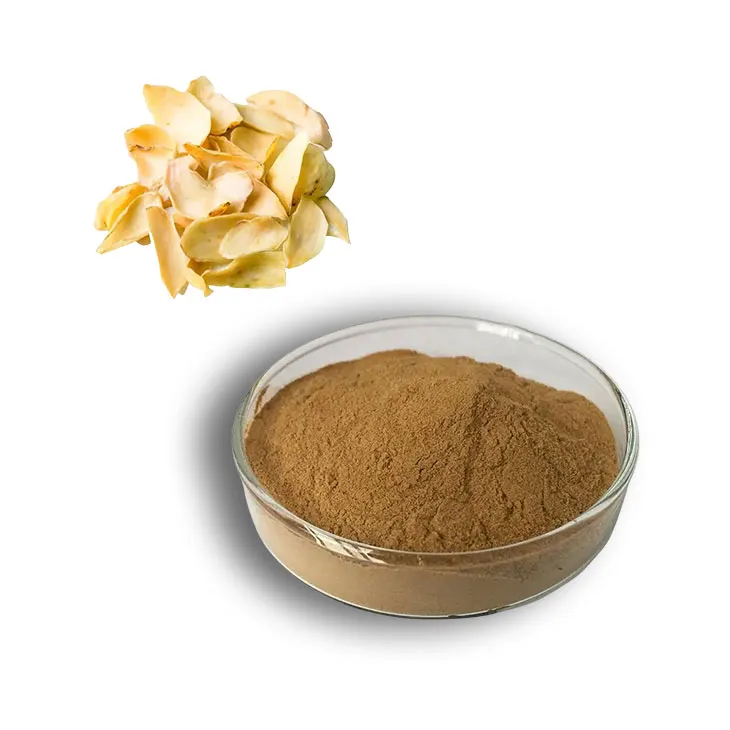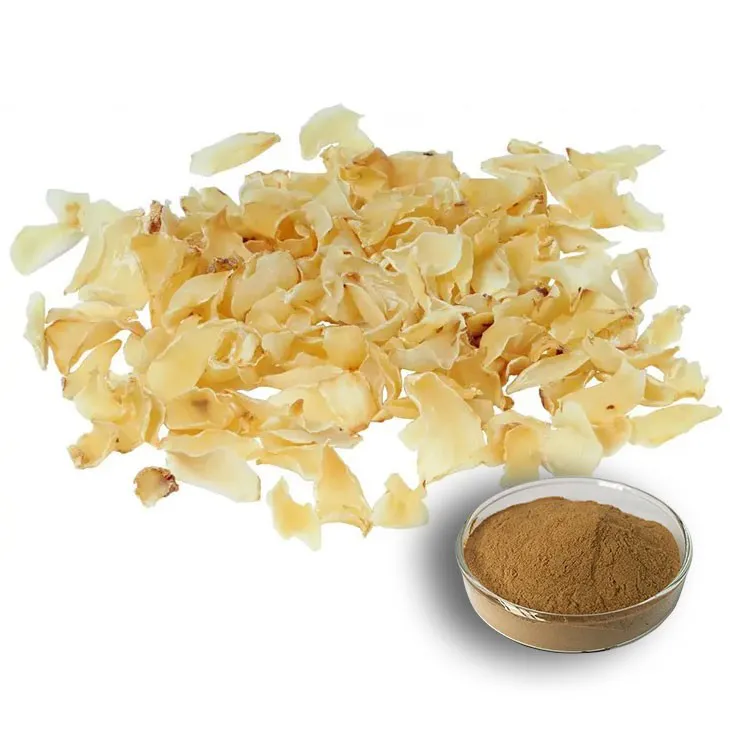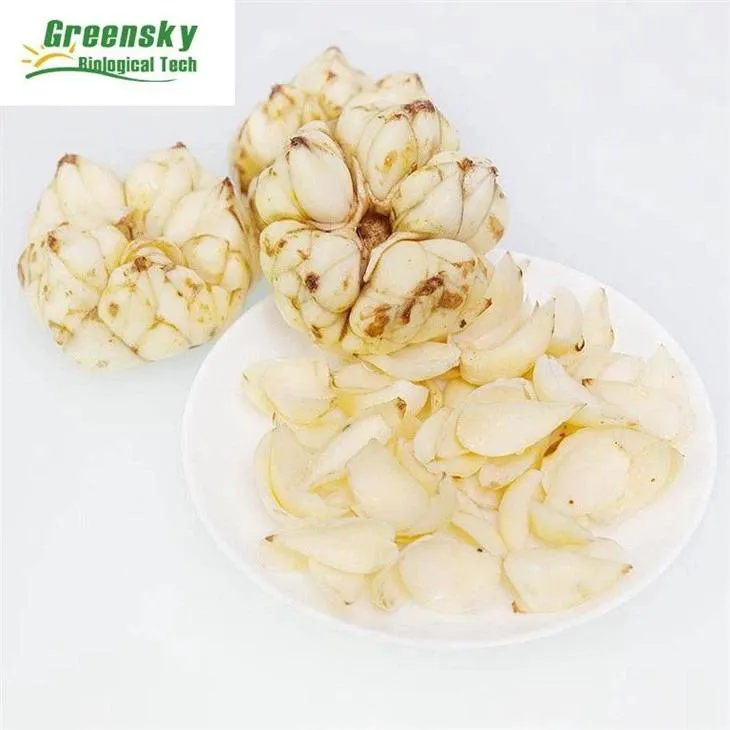- 0086-571-85302990
- sales@greenskybio.com
The best method for extracting lily extract.
2024-11-29

1. Introduction
Lily, a beautiful and fragrant flower, has been used for various purposes in different fields such as medicine, cosmetics, and food. Lily extract is rich in bioactive compounds, which endow it with antioxidant, anti - inflammatory, and other beneficial properties. However, the extraction method plays a crucial role in obtaining high - quality Lily extract. This article will explore different aspects of the extraction process, including solvents, extraction times, and temperatures, and compare modern and traditional extraction technologies.

2. Solvents for Lily extract Extraction
2.1. Water as a Solvent
Water is a commonly used solvent in the extraction of lily extract. It is non - toxic, environment - friendly, and can dissolve many water - soluble components in lilies. For example, some polysaccharides and water - soluble vitamins can be effectively extracted by water. However, water may not be able to extract some lipophilic components.2.2. Ethanol as a Solvent
Ethanol is another popular solvent. It has a good ability to dissolve both hydrophilic and lipophilic substances. Ethanol - based extraction can extract a wider range of bioactive compounds from lilies. Moreover, ethanol is relatively easy to obtain and has a certain degree of safety. In addition, different concentrations of ethanol can be used to target different components. For instance, a lower concentration of ethanol may be more suitable for extracting some polar compounds, while a higher concentration can extract more non - polar substances.2.3. Other Solvents
There are also some other solvents that can be used for lily extract extraction. For example, hexane can be used to extract lipids specifically. However, hexane is a volatile organic solvent and requires careful handling due to its potential toxicity. Supercritical fluids, such as supercritical CO₂, are also emerging as potential solvents. Supercritical CO₂ has the advantages of being non - toxic, non - flammable, and having a low environmental impact. It can provide a high - purity extract with good selectivity for certain components.
3. Extraction Times and Their Influence
3.1. Single - Extraction
Single - extraction is the simplest method, where the lily material is exposed to the solvent only once. The advantage of this method is its simplicity and relatively short processing time. However, the extraction efficiency may not be very high, especially for components that are difficult to extract. As a result, a large amount of the target component may still remain in the raw material after a single - extraction.3.2. Multiple - Extraction
Multiple - extraction involves repeating the extraction process several times using the same or different solvents. This method can significantly improve the extraction efficiency. For example, if we use ethanol for multiple - extraction of lily, we can extract more bioactive compounds compared to a single - extraction. Usually, with each additional extraction cycle, the amount of the extracted component will increase, but the increase rate may gradually decrease.
4. The Impact of Temperature on Extraction
4.1. Low - Temperature Extraction
Low - temperature extraction, typically carried out at room temperature or slightly above, can preserve the integrity of some heat - sensitive components. For example, some enzymes or proteins in lily may be denatured at high temperatures. By using low - temperature extraction, these components can be extracted while maintaining their activity. However, the extraction rate at low temperatures may be relatively slow, and it may take a longer time to achieve a satisfactory extraction yield.4.2. Moderate - Temperature Extraction
Moderate - temperature extraction, usually in the range of 40 - 60°C, can often achieve a balance between extraction efficiency and component stability. At this temperature range, the solubility of many components in the solvent is increased, which can lead to a higher extraction yield. For example, some flavonoids in lily can be more effectively extracted at moderate temperatures.4.2. High - Temperature Extraction
High - temperature extraction, above 60°C, can accelerate the extraction process by increasing the molecular motion of the components and the solvent. However, it also brings the risk of degrading some components. For example, some volatile oils in lily may be lost or their chemical structures may be changed at high temperatures.
5. Comparison between Modern and Traditional Extraction Technologies
5.1. Traditional Extraction Technologies
- Maceration is a traditional extraction method. In this method, the lily material is soaked in a solvent for a long time, usually several days to weeks. The advantage of maceration is its simplicity and low cost. However, it has a long extraction time and may lead to the degradation of some components due to the long exposure to the solvent.
- Percolation is another traditional method. It involves passing the solvent through a column filled with lily material. This method can improve the extraction efficiency compared to maceration, but it still has some limitations such as relatively long processing time and potential incomplete extraction.
5.2. Modern Extraction Technologies
- Ultrasound - Assisted Extraction (UAE) is a modern extraction technology. It uses ultrasonic waves to create cavitation bubbles in the solvent, which can disrupt the cell walls of lily and increase the mass transfer rate. UAE can significantly reduce the extraction time compared to traditional methods and can also improve the extraction efficiency. For example, in the extraction of lily polysaccharides, UAE can achieve a higher yield in a shorter time.
- Microwave - Assisted Extraction (MAE) is another modern method. Microwave energy can heat the solvent and lily material rapidly and evenly, which can also enhance the extraction process. MAE has the advantages of high efficiency, short extraction time, and can be easily controlled. However, it requires special equipment and careful control of microwave power to avoid over - heating and component degradation.
- Supercritical Fluid Extraction (SFE), especially using supercritical CO₂, as mentioned before, is a very promising modern extraction technology. It can provide high - purity extracts with good selectivity and has minimal environmental impact.
6. Conclusion
To obtain high - quality lily extract, a comprehensive consideration of various factors is necessary. The choice of solvent, extraction time, and temperature all play important roles in the extraction process. Modern extraction technologies generally offer higher efficiency and better quality control compared to traditional methods. However, the specific method should be selected according to the actual needs, such as the target components, cost, and scale of production. In the future, further research on lily extract extraction is expected to develop more efficient and environmentally friendly extraction methods.
FAQ:
What are the common solvents used in lily extract extraction?
Common solvents include ethanol, water, and sometimes a combination of both. Ethanol is often preferred due to its ability to dissolve a wide range of compounds present in lilies. Water can also be used, especially for extracting water - soluble components. However, the choice of solvent depends on the specific components one wants to extract from the lily.
How does the extraction time affect the quality of lily extract?
If the extraction time is too short, not all the desired compounds may be fully extracted from the lily, resulting in a lower yield and potentially lower quality of the extract. On the other hand, if the extraction time is too long, it may lead to the extraction of unwanted compounds or degradation of the target compounds. Optimal extraction time needs to be determined experimentally, usually based on factors such as the type of solvent, temperature, and the nature of the lily material.
What role does temperature play in the extraction of lily extract?
Temperature can significantly influence the extraction process. Higher temperatures generally increase the solubility of compounds in the solvent, which can speed up the extraction process and potentially increase the yield. However, extremely high temperatures may cause thermal degradation of some sensitive compounds in the lily. Lower temperatures may result in slower extraction rates but can be beneficial for preserving heat - sensitive components. Therefore, a suitable temperature range needs to be identified for effective extraction.
What are the advantages of modern extraction technologies over traditional ones in obtaining lily extract?
Modern extraction technologies, such as supercritical fluid extraction and microwave - assisted extraction, often offer several advantages over traditional methods. Supercritical fluid extraction can provide a more selective extraction, with a cleaner extract and better preservation of bioactive compounds. Microwave - assisted extraction can significantly reduce extraction time due to the rapid heating effect. In contrast, traditional methods like Soxhlet extraction may be time - consuming and may not be as efficient in extracting certain compounds.
How can one ensure the high - quality of lily extract during the extraction process?
To ensure high - quality lily extract, one should start with high - quality lily raw materials. The selection of appropriate solvents, extraction times, and temperatures is crucial, as mentioned before. Additionally, proper filtration and purification steps after extraction are necessary to remove impurities. Monitoring the extraction process and analyzing the extract for key components can also help in maintaining quality.
Related literature
- Optimization of Lily Extract Extraction Process"
- "Advanced Technologies in Lily Extract Production"
- "The Influence of Solvents on Lily Extract Quality"
- ▶ Hesperidin
- ▶ citrus bioflavonoids
- ▶ plant extract
- ▶ lycopene
- ▶ Diosmin
- ▶ Grape seed extract
- ▶ Sea buckthorn Juice Powder
- ▶ Beetroot powder
- ▶ Hops Extract
- ▶ Artichoke Extract
- ▶ Reishi mushroom extract
- ▶ Astaxanthin
- ▶ Green Tea Extract
- ▶ Curcumin Extract
- ▶ Horse Chestnut Extract
- ▶ Other Problems
- ▶ Boswellia Serrata Extract
- ▶ Resveratrol Extract
- ▶ Marigold Extract
- ▶ Grape Leaf Extract
- ▶ blog3
- ▶ blog4
-
The best pitaya powder in 2024.
2024-11-29
-
The best organic Hedyotis diffusa extract.
2024-11-29
-
Trace - component organic aguaje extract.
2024-11-29
-
The best black garlic extract in nature.
2024-11-29
-
Super Essence of Natural Alisma Extract.
2024-11-29
-
The best organic vitamin B6.
2024-11-29
-
100% Organic Bilberry Extract.
2024-11-29
-
Chinese Maca Extract Powder Manufacturers.
2024-11-29
-
Sophora Flavescens Root Extract
2024-11-29
-
Fig Extract
2024-11-29
-
Aminolevulinic acid
2024-11-29
-
Reishi mushroom extract
2024-11-29
-
Medicinal Marshmallow Extract
2024-11-29
-
Lemon Extract
2024-11-29
-
Ginseng Root Extract
2024-11-29
-
Bayberry Extract
2024-11-29
-
Nettle leaf extract
2024-11-29
-
Troxerutin
2024-11-29





















